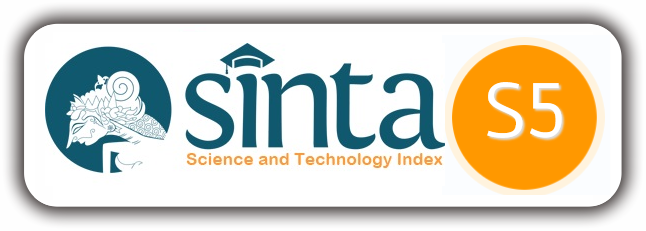EVALUATION OF SUCCESSFUL IMPLEMENTATION OF LOCAL FINANCIAL MANAGEMENT INFORMATION SYSTEM (LFMIS) SUTDY AT YOGYAKARTA MUNICIPAL GOVERNMENT
Ignatius Novianto Hariwibowo(1*)
(1) Maksi FEB UGM
(*) Corresponding Author
Abstract
Keywords
Full Text:
PDFReferences
Ali, Syaiful dan Green, Peter. 2007. IT Governance Mechanisms in Public Sector Organizations: An Australia Context. Journal of Global Information Management, 15(4), 41-63.Almutairi, H and Subramanian, GH. 2005. An Empirical Application of The DeLone and McLean Model in The Kuwaiti Private Sector. Journal of Computer Information Systems, 45(3), 113–122.Ang, S dan Soh, C. 1997. User Information Satisfaction, Job Satisfaction, and Computer Background: An Exploratory Study. Information & Management, 32(5), 255–266.Bairi, Jayachandra dan Manohar, B. M. 2011. Critical Success Factors in Gaining User Customer Satisfaction in Outsourced IT Service. Journal of Enterprise Information Management, 24(6), 475-493.Balantine J, B Onner M, Levy M, Martin AIM dan Powell PL. 1996. The 3-D Model of Information Systems Success: The Search for The Dependent Variable Continues. Information Resources Management Journal, 9(4), 5–14.Bernard, R dan Satir, A. 1993. User Satisfaction With EISs – Meeting The Needs of Executive Users. Information Systems Management, 10(4), 21–29.19Bokhari, Rahat H. 2005. The Relationship Between System Usage and User Satisfaction: A Meta-Analysis. Journal of Enterprise Information Management, 18(2), 211-234.Coombs CR, Doherty NF dan Loan-Clarke J. 2001. The Importance of User Ownership and Positive User Attitudes in The Successful Adoption of Community Information Systems. Journal of End User Computing, 13(4), 5–16.Cooper, D.R. dan Schindler, P.S. 2006. Business Research Methods, 9thed. The McGraw-Hill Companies. Inc, Singapore.Davis, F.D., 1989. Perceived Usefulness, Perceived Ease of Use, and User Acceptance of Information Technology. MIS Quarterly, (13:3), 319-340.DeLone, W.H. and McLean, E.R. 1992. Information Systems Success: The Quest for The Dependent Variable. Information Systems Research, 3(1), 60-95.DeLone, W.H. and McLean, E.R. 2003. The DeLone and McLean Model of Information Systems Success: A Ten-Year Update. Journal of Management Information Systems, 19(4), 9-30.Festinger, L. 1957. A Theory of cognitive Dissonance. Row Peterson. New York.Goodhue, D.L. and Thompson, R.L. 1995. Task-technology fit and individual performance. MIS Quarterly, 19 (2), 213-36.Gelbstein, E. 2002. Outsourcing. In H. Bidgoli, et al. (Eds.), Encyclopedia of information systems (pp. 428-430).Gelderman, M. 2002. Task Difficulty, Task Variability and Satisfaction With Management Support Systems. Information & Management, 39(7), 593–604.Geriach, J. dan F.-Y. Kuo. 1991. Understanding Human-Computer Interaction for Information Systems Design. MIS Quarterly, 15(4), 527-549.Goldfinch, Shaun. 2007. Pessimism, Computer Failure, and Information Systems Development in the Public Sector. Public Administration Review, 67(5), 917-926.Hair, J., Blake, W., Babin, B., dan Tatham, R. 2006. Multivariate Data Analysis, Prentice Hall, New Jersey:Hartono, J. dan Abdullah, W. 2009. Konsep dan Aplikasi PLS (Partial Least Square) untuk Penelitian Empiris. Penerbit Andi, Yogyakarta.Hartono, J. 2008. Metodologi Penelitian Sistem Informasi. Penerbit Andi, Yogyakarta.Huang, C.J. 2003. Usability of E-government Web-Sites for20People with Disabilities. Proceedings of the 36th Annual Hawaii International Conference on System Sciences ( HICSS’03).Iivari, J. dan Lyytinen, K. 1998. Research on Information Systems Development in Scandinavia – Unity in Plurality. Scandinavian Journal of Information Systems, 10(1), 135-86.Ives, B., Olson, M.H. dan Baroudi, I.J. 1983. The Measurement of User Information Satisfaction. Communication of the ACM. 26(10), 785 -93.Ives, B., dan Olson, M.H. 1984. User Involvement and MIS Success: A Review of Research. Management Science, 30(5), 586-603.Jordan, E. dan J. Burn. 1997. Information Systems Acceptance: A Consequence of Cultures. PACIS '97, Brisbane, Information Systems Management Research Concentration, Queensland University of Technology, Australia 451-459.Kim J, L Ee J, H An K dan Lee M. 2002. Business as buildings: metrics for the architectural quality of internet businesses. Information Systems Research, 13(3), 239–254.Kulkarni UR, Ravindran S, dan Freeze R. 2006. A Knowledge Management Success Model: Theoretical Development and Empirical Validation. Journal of Management Information Systems, 23(3), 309–347.Lawrence, M dan Low, G. 1993. Exploring Individual User Satisfaction Within User-Led Development. MIS Quarterly, 17(2), 195–208.Leclercq, A. 2007. The Perceptual Evaluation of Information Systems Using The Construct of User Satisfaction: Case Study of a Large French Group. The DATABASE for Advances in Information Systems, 38(2), 27–60.Lyytinen, K. 1988. Expectation Failure Concept and Systems Analysts' View of Information System Failures: Results of an Exploratory Study. Information and Management, 14(4),45-56.Marche, Sunny dan Mcniven, James D. Maret 2003. E-Government and E-Governance : The Future Isn’t What It Used To Be. Canadian Journal of Administrative Science, 20(1), 74-86.Mcgill T, Hobbs V, dan Klobas, J. 2003. User-Developed Applications and Information Systems Success: A Test of DeLone and McLean’s Model. Information Resources Management Journal, 16(1), 24–45.Mckinney V, Y Oon K dan Z Ahedif. 2002. The Measurement of21Web-Customer Satisfaction: An Expectation and Disconfirmation Approach. Information Systems Research, 13(3), 296–315.Myers BL, Kappelman LA dan PryButok VRA. 1997. Comprehensive Model for Assessing The Quality and Productivity of The Information Systems Function: Toward A Contingency Theory for Information Systems Assessment. Information Resources Management Journal, 10(1), 6–25.Oliver, R. L. 1980. A cognitive model of the antecedents and consequences of satisfaction decisions. Journal of Marketing Research, 17, 460-469.Petter, S., DeLone, W.H. and McLean, E.R. 2008. Measuring Information Systems Success: Models, Dimensions, Measures, and Interrelationships. European Journal of Information Systems, 17(3), 236-63.Pitt, L.F., Watson, R. and Kavan, C.B. 1995. Service Quality: A Measure of IS Effectiveness. MIS Quarterly, 19(2), 173-87.Rai, A., Lang, S.S. and Welker, R.B. 2002. Assessing the validity of IS success models: an empirical test and theoretical analysis. Information Systems Research, 13(1), 50-69.Rushinek, A. dan Rushinek, S. F. 1986. What Makes User Happy?. Comunication of The ACM, 29(7), 594-598.Seddon, P.B. 1997. A Respecification and Extension of The DeLone and McLean Model of IS Success. Information Systems Research. 8(3), 240-53.Seddon, P.B. and Kiew, M.Y. 1996. A Partial Test and Development of The DeLone and McLean Model of IS success. Australasian Journal of Information Systems, 4(1), 90-109.Sørum, H., Medaglia, R. and Andersen, K.N. 2009. Assessment of website quality: scandinavian web awards right on track?, in Wimmer, M.A.et al. (Eds). Proceedings of the 8th International Conference on Electronic Government (EGOV ), Linz, Austria , Springer, Berlin, pp. 198-209.Szajna, B. and R. Scamell. 1993. The Effects of Information System User Expectations on Their Performanceand Perceptions. MIS Quarterly, 17(4), 493-516.Tolbert, Caroline J. dan Mossberger, Karen. 2006. The Effects of E-Government on Trust and Confidence in Government. Public Administration Review, 66(3), 354-369.Vlahos GE, Ferratt TW, dan Knoepfleg. 2004. The Use of Computer-Based Information Systems by German Managers to Support Decision Making.22Information & Management, 41(6), 763–779.Wanyama Indeje dan Zheng Qin. 2011. Stakeholder Perception of Information Systems Development Success in The Public Sector. Management science and Engineering, 5(2), 31-41.Williams, R. 1996. The Impact of Cognitive Style on User Satisfaction with an Information Systems: A Preliminary Study. Australasian Conference on Information Systems 1996, Hobart, Tasmania, University of Tasmania, 789-797.
Article Metrics
Refbacks
- There are currently no refbacks.
This work is licensed under a Creative Commons Attribution 4.0 International License.
______________________________________________________________________________________________________
2302 - 1500


_logo2.png)





